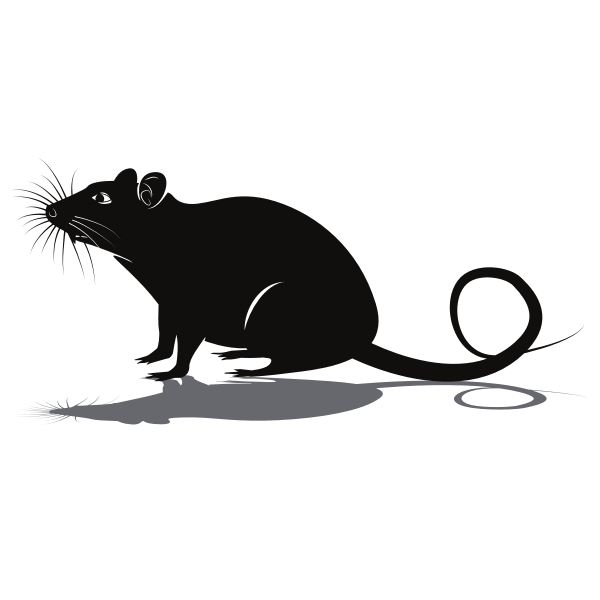Rodent/ Rat control
Rat control is type of pest control services. Rodents are small mammals that have sharp front teeth. Rats, mice, and squirrels are rodents. Any of a very large order (Rodentia) of gnawing mammals, including rats, mice, squirrels, and beavers, characterized by constantly growing incisors adapted for gnawing or nibbling; esp., in popular usage, a rat or mouse.
Rodent/ Rat control
Rats and mice are not only an annoyance, but they may also cause property damage and disease transmission. You’ll know they’ve come if you notice mouse droppings or shredded cloth or paper near a food source. If you find rodents, there are many actions you may take to assure their permanent eradication.
Using traps or poisons to remove rats will not keep them out of your house in the future. To keep rats and mice out of your house or company for good, you must restrict access by sealing all possible entry holes. It is also critical to keep rodents away from food and water by storing food in firmly sealed containers and fixing broken pipes.
Access Points for Rodents
- Holes near cupboards, closets, or doors that lead to the outdoors or crawl area.
- Holes in the location of sink or appliance pipes.
- Cracked basement foundations or unscreened ventilation openings in the attic, particularly in older houses.
- Holes around windows or doors.
- Screens missing from vents or crawl areas beneath structures.
RODENT ACTIVITY INDICATORS
- Fruits and nuts that have been damaged or eaten in part, such as walnuts, oranges, and avocados.
- Snail shells broken beneath bushes, on fences, or near nesting places
- Gnawing marks on plastic, wood, or rubber surfaces.
- Greasy rub marks created by the rat’s greasy fur coming into touch with painted surfaces or wooden beams on a regular basis.
- Rodent droppings are often indicators of high rodent activity. The droppings are dispersed at random and are usually discovered around a rat runway, feeding spot, or shelter. Forced air heaters, swimming pool heater covers, and water heater closets all have droppings.
- Noises (gnawing, etc.) from the attic, subfloor, and wall spaces.
- Visual Sightings on utility lines, fence tops, or in trees.
- Burrows in the ground and near sewage pipes are indications of Norway rat activity.
Common Food and Water Sources
- Unsealed food containers, such as bags of chips, rice, cereal, crackers, flour, and other non-perishables.
- Pet food and water should not be left out overnight or in a bag, but should be kept in a safe container.
- Fruits and vegetables left in open dishes outside the refrigerator.
- Pipes or faucets that are leaking throughout the home.
- Open the garbage and compost bins.
TYPE OF RODENTS
Roof rats: Roof rats are thin and nimble, and their tails are longer than their heads and bodies combined. Its overall length can range from 12 to 17 3/4 inches and it can weigh up to 3/4 pounds. Roof rats dwell in ivy, wild blackberry vines, attics, garages, and wood heaps and nests above ground. It will infiltrate buildings if given the chance, and it frequently uses utility wires and fences as runways. It prefers to eat fruits, nuts, ivy, and pet food, all of which are often found in residential settings.
House mouse: House mouse The house mouse has a tiny, thin body with a tail that is longer than the length of its head and body. Its body length ranges from 2-1/2 to 3-4/5 inches. Its body is grayish brown in hue, with a gray or buff belly. House mice are quick climbers who can squeeze through 14-inch-diameter holes. It consumes a variety of foods, but its favorites are seeds and grains. It typically moves in a 10 to 30 ft. diameter circle.
Infectious Diseases Caused by Rodents
Plague: The bite of a rat flea infected with the pathogenic bacteria Yersinia pestis causes the disease. While there have been no instances of plague in Berkeley, the possibility of an outbreak grows as the rat population grows.
Salmonellosis: Bacterial “food poisoning” that can be spread when rats defecate or urine on food, dishes, kitchen countertops, floors, and other human-associated things, contaminating food or drink.
Leptospirosis: People can become ill from the bacterial spirochete Leptospira spp. by coming into contact with infected rats’ urine or eating food contaminated with infected rats’ urine.
Murine Typhus: Rickettsia typhi causes flea-borne typhus, which may be transferred to rodents or other hosts such as humans when contaminated fecal material from a flea is scratched into the skin or rubbed into a flea bite, open sore, or wound. To learn more
Our steps to eliminate the rodent and pest control (Rat control process): We are licensed by the Sharjah government and follow the rules and regulations in terms of using enti-pest meds and sprays. We provide our pest control services by following some steps. Our process of working follows few steps to get best possible result:
- Look for the entry points of rats and figure it out.
- Identifying the type of rats living in the house or the place.
- Eliminating the existing rats in the house or place.
- Explain to you if there was any damage done by rats.
- Checking regularly (if you wish)
- Seal off the entry points so that rats cannot enter easily.
- Advise what should be done to make sure they are not coming back.
So, if you are looking for a professional pest control service provider you can easily reach us. We do our job with care and we are experts at it. Don’t hesitate to reach us for any enquiry. We are happy to help you. See other services…
![Untitled-1-[Recovered]](https://www.tmbcpc.com/wp-content/uploads/2021/07/Untitled-1-Recovered-300x135.png)
